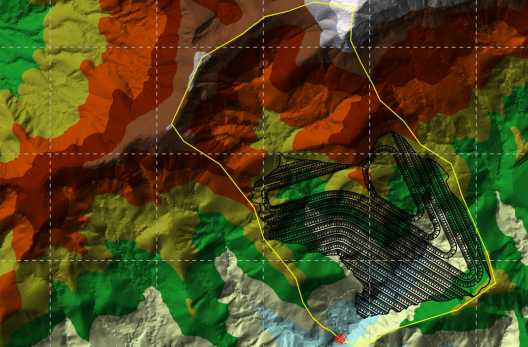IMS
IMS is a set of specific software and methodologies that allow an unlimited range of georeferenced parameters to be analysed simultaneously. Thus, the use of IMS increases the capacity of compiling data and, consequently, the power of analysis on the part of the part of the professionals involved in the project.
Find out more about our solutions:
Use of IMS in Environmental Engineering

A while ago, the unavailability of hardware and software for spatial analyses limited the depth of complex studies involving georeferenced data. Over the last few decades, however, the scenario has changed dramatically and today the reality is quite different. The development of the IMS – Integrated Management System has its share of the credit for this. Fonntes Geotécnica uses these resources in its works and offers solutions such as: • Mapping areas of diverse interests. • Carrying out multicriteria analyses. • Preparation of maps in general which, in addition to their excellent graphic quality, objectively and reliably represent the reality of the field. Furthermore, the use of IMS is a determining factor in the quality and reliability of hydrological studies, which are necessary for the design of tailings dams, water dams, surface drainage networks, and other works.
Topographic survey

Topographic surveying is the set of methods and processes that relate previously chosen points, conveniently distributed along a plot of land with known topographic coordinates, to the defining points of its planialtimetric, natural, and artificial relief features, with a view to their exact representation on the desired scale. Topographic surveying uses measurements of horizontal and vertical angles and distances, with instruments suited to the desired accuracy.
Drone for aerophotogrammetric mapping
Fonntes has the latest in planialtimetric surveying technology: drones, also known by the acronym UAV (Unmanned Aerial Vehicle). This is a remotely controlled aircraft that takes aerial images which, together with other variables, can generate topographical data in greater detail and faster than conventional surveys such as Total Station or GNSS RTK, in addition to the usefulness of the image itself. As an additional advantage, the images obtained by the drone can be useful in surveys carried out periodically, for drawing up records for the temporal analysis of works and structures, such as mining, vegetation suppression, roads, railways, etc. The images are georeferenced and orthorectified, allowing DSM (Digital Surface Model) to be processed to obtain the DTM (Digital Terrain Model). In this way it is possible to deliver faster and better-quality results, generating data with greater levels of detail at a faster rate of productivity.



